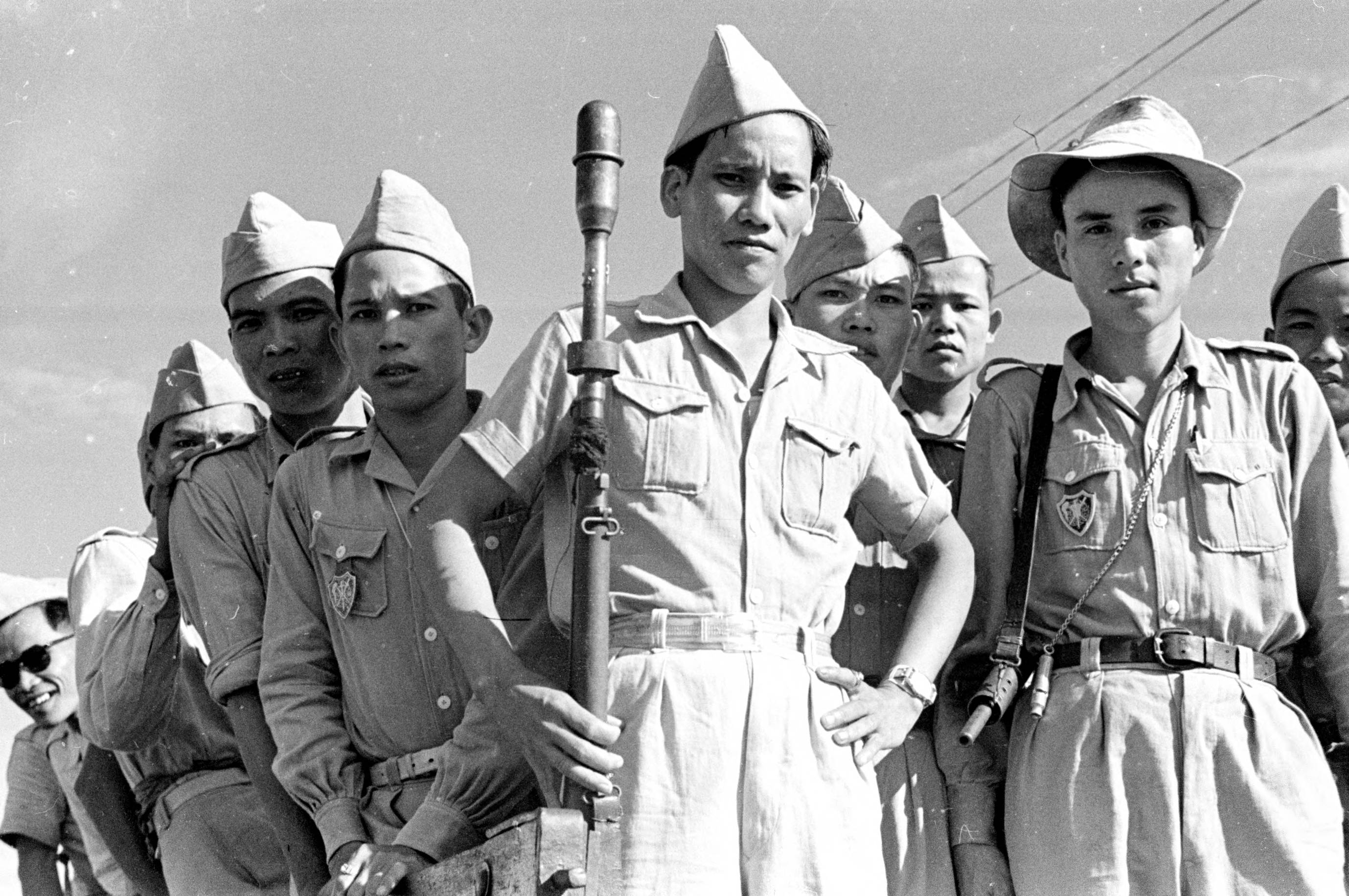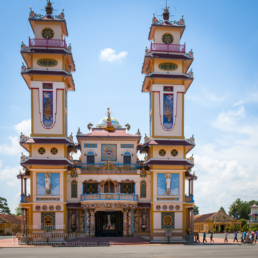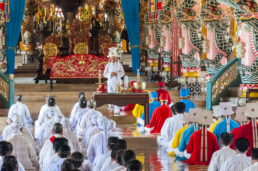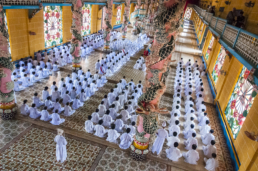French Indochina – Rare Cao Đai ‘Unification Of Sects’ Badge

During the Vietnam War, the French employed different strategies in the north and south. In the north, they pursued a conventional military approach. But, in the south, they relied on auxiliary forces and private armies to conserve manpower. Among the groups they formed alliances with was the Cao Đài, a militant politico-religious sect with over two million followers.
The Cao Đài religion was established in 1926 and incorporated elements of Buddhism, Taoism, Confucianism, Christianity, and spirit worship. Under the leadership of Phạm Công Tắc, the Cao Đài sect became increasingly politically oriented. During the WW2 it openly supported the Japanese regime, fighting against the French. After the war, they allied themselves with other nationalist groups but faced internal rivalries. The French reoccupied Saigon, leading to clashes between the Cao Đài militia and the Viet Minh.

In 1949, when Vietnam was granted self-government within the French Union, the Cao Đài pledged their allegiance. They formed a battalion that integrated into the Vietnamese National Army whilst continuing their territorial conflict with the Hòa Hảo sect, which weakened the nationalist movement.

The allegiance of the sects to Bảo Đại and the French was always opportunistic. The French provided training and coordination for the Cao Đài sect’s military activities. However, their tactical value was mixed as the sect focused on expanding its own power base. As one French officer observed, “The Cao Dai have no enemies and no permanent friends, but they have permanent interests, which are those of the sect.”

The badge I recently acquired is a six-pointed star insignia, identified as the “DANG PHAI THONG NHAT- GIAO CHU PHAM CONG TAC / Unification of Sects” in Marcel Duflot’s Symbols & Traditions (S&T) publication Les Insignes de l’Armee Viet Namienne. It was instituted in 1951 on the birthday of Cao Đài ‘Pope’ Phạm Công Tắc (born on June 21, 1890).
The aluminium painted badge, measuring 32mm across by 32mm high, features a silver and white bust of Phạm Công Tắc in profile against a yellow background with three horizontal red stripes representing the flag of the State of Vietnam (1949 – 55). Above the bust, “DANG PHAI THONG NHAT” (“United Party“) is written, and below it, “GIAO CHU PHAM GONG TAC” (“Patriarch Phạm Công Tắc“). Each point of the star bears Chinese characters that I am unable to translate. The entire badge is outlined with a silver border which Les Insignes de l’Armee Viet Namienne says should be chrome. My aged and worn example shows the silver as aluminium and no longer has a fastening attachment but that appears to have been the standard folded wire brooch pin type.
The badge is also shown in the book Forces Armees Vietnamiennes by Segalan but without description and is not shown in Jacques Sicard’s Commandos et Forces Suppletives Indochine 1945 – 1954. Duflot’s book describes the insignia as the “Unification of the Sects” badge, but I am uncertain if this description is accurate.
It is true that upon returning from exile in Madagascar, Phạm Công Tắc spent considerable time consolidating the sect’s power base, which included bringing various branches of the religion under the control of the Holy See at Tay Ninh. However, in June 1951, the same month as Phạm Công Tắc’s birthday, Cao Đài Colonel Trinh Minh Thé rebelled with 2,000 of his Liên Minh troops when General Minh, chief-of-staff of the Vietnamese army, proposed sending 15,000 Cao Đài troops to Tonkin.
Therefore, I am unsure if the badge truly commemorates the unity of the sects or something else. Information about this relatively unknown badge is scarce and primarily confined to the aforementioned French texts. If anyone can provide further details to supplement the information I have outlined, please contact me.

Related Articles
The Cao Dai and its Militia 1926 – 1956
The funeral of General Trình Minh Thế and the Cao Đài badge debate













